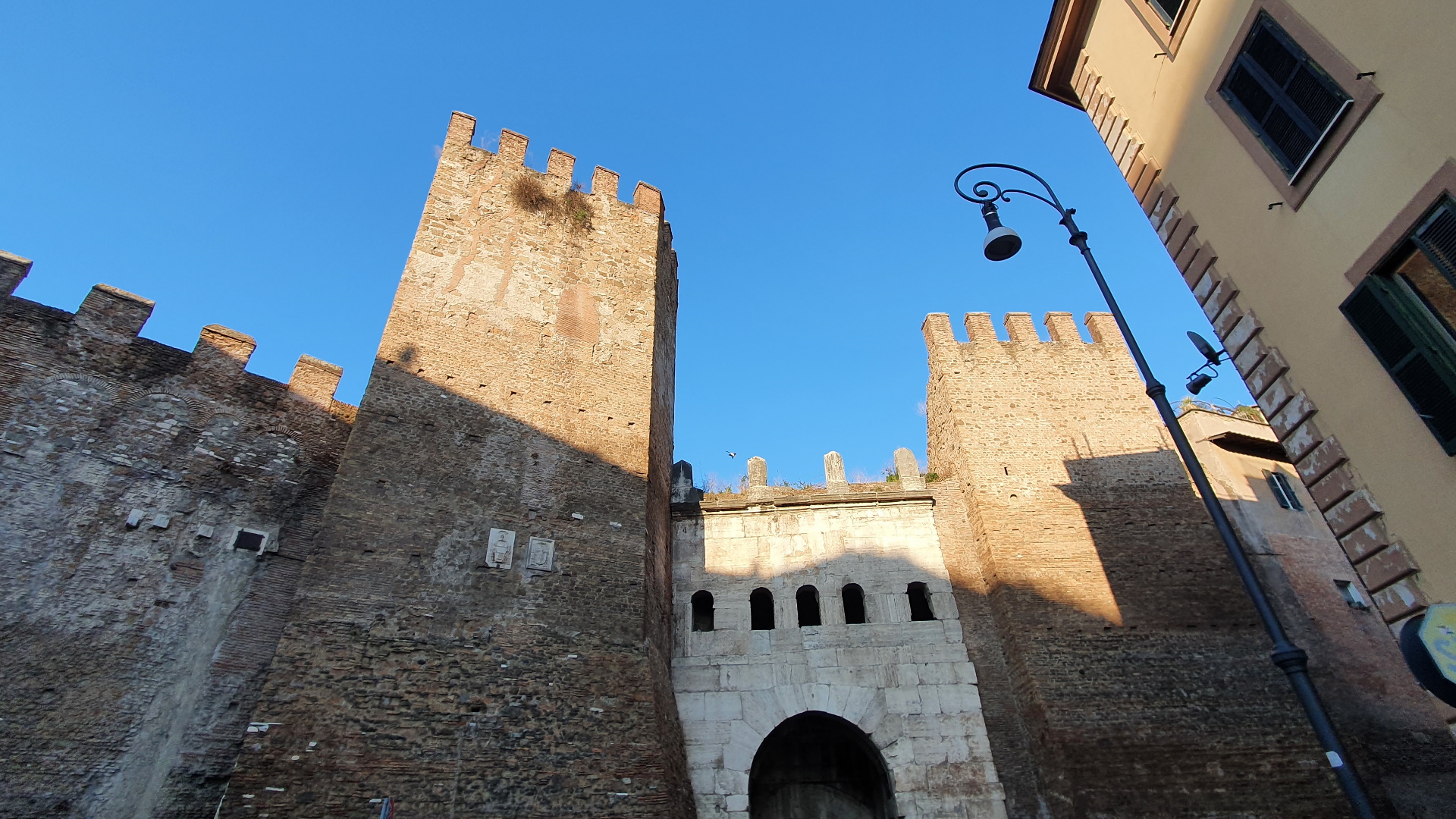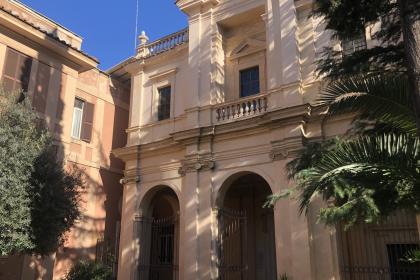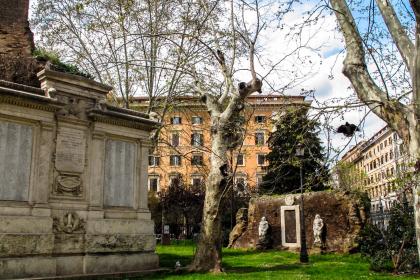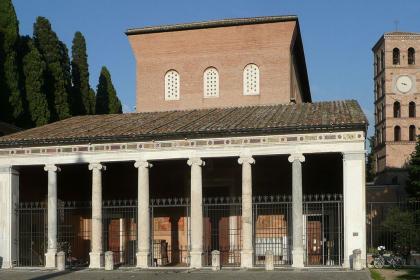
Die Porta Tiburtina oder Porta San Lorenzo ist ein Tor der Aurelianischen Stadtmauer der Stadt Rom. Durch das Tor verlief die Via Tiburtina, heute Via Tiburtina Antica. Ursprünglich war es nur ein monumentaler Torbogen, der 5 v. Chr. unter Kaiser Augustus errichtet wurde, um drei Wasserleitungen (die Aqua Iulia, Aqua Marcia und Aqua Tepula) über die Via Tiburtina zu leiten. Zwischen 270 und 275 wurde der Bogen in den Mauerverlauf einbezogen.
Als Kaiser Honorius die Mauern restaurierte und verstärkte (401-402 n. Chr.), wurde ein zweiter Torbogen auf der Innenseite vor den bestehenden gesetzt. Diese Ergänzung ließ Papst Pius IX. 1869 wieder entfernen. Somit hat das gesamte Bauwerk ein doppeltes architektonisches Erscheinungsbild. Der innere Teil ist römisch-republikanisch und der äußere Teil hat Zinnen und Türme. Außerdem ist der Sockel des äußeren Tores etwa anderthalb Meter höher als der Sockel des augusteischen Bogens und hat eine Öffnung, die nicht symmetrisch zu letzterem ist.
Der von Augustus errichtete Bogen, der heute die Innenseite des Tors bildet und etwas tiefer liegt als das heutige Straßenniveau, ist vollständig aus Travertin gefertigt und mit toskanischen Pilastern und mit Bukranien verzierten Schlusssteinen in einem hervorragenden Erhaltungszustand.
Der Dachboden wird von den drei Wasserleitungen durchquert und trägt drei Inschriften. Die obere, auf dem Aqua Iulia-Kanal, stammt aus dem Jahr, in dem der Bogen gebaut wurde. In der Mitte, am Kanal der Aqua Tepula, befindet sich eine Inschrift, die auf die Restauration von Caracalla im Jahr 212 zurückgeht. Auf dem unteren Kanal, dem der Aqua Marcia, befindet sich eine Inschrift, die die von Titus im Jahr 79 angeordnete Restaurierung feiert. Auf der anderen Seite befindet sich die Honorianische Inschrift, die an die Vergrößerung der Mauern erinnert, und der Name von Flavius Macrobius Longinianus, Präfekt von Rom im Jahr 402, der die Arbeiten leitete.
Die Kirche Santa Bibiana

 Condividi
Condividi
Vittorio Emanuele II Platz

 Condividi
Condividi
Das Herz des multiethnischen Stadtteils Esquilino
Basilika Sankt Laurentius vor den Mauern - San Lorenzo fuori le Mura

 Condividi
Condividi
Informationen
 Condividi
Condividi
Location
Um mehr über alle barrierefreien Dienste zu erfahren, besuchen Sie den Abschnitt barrierefreies Rom.











































